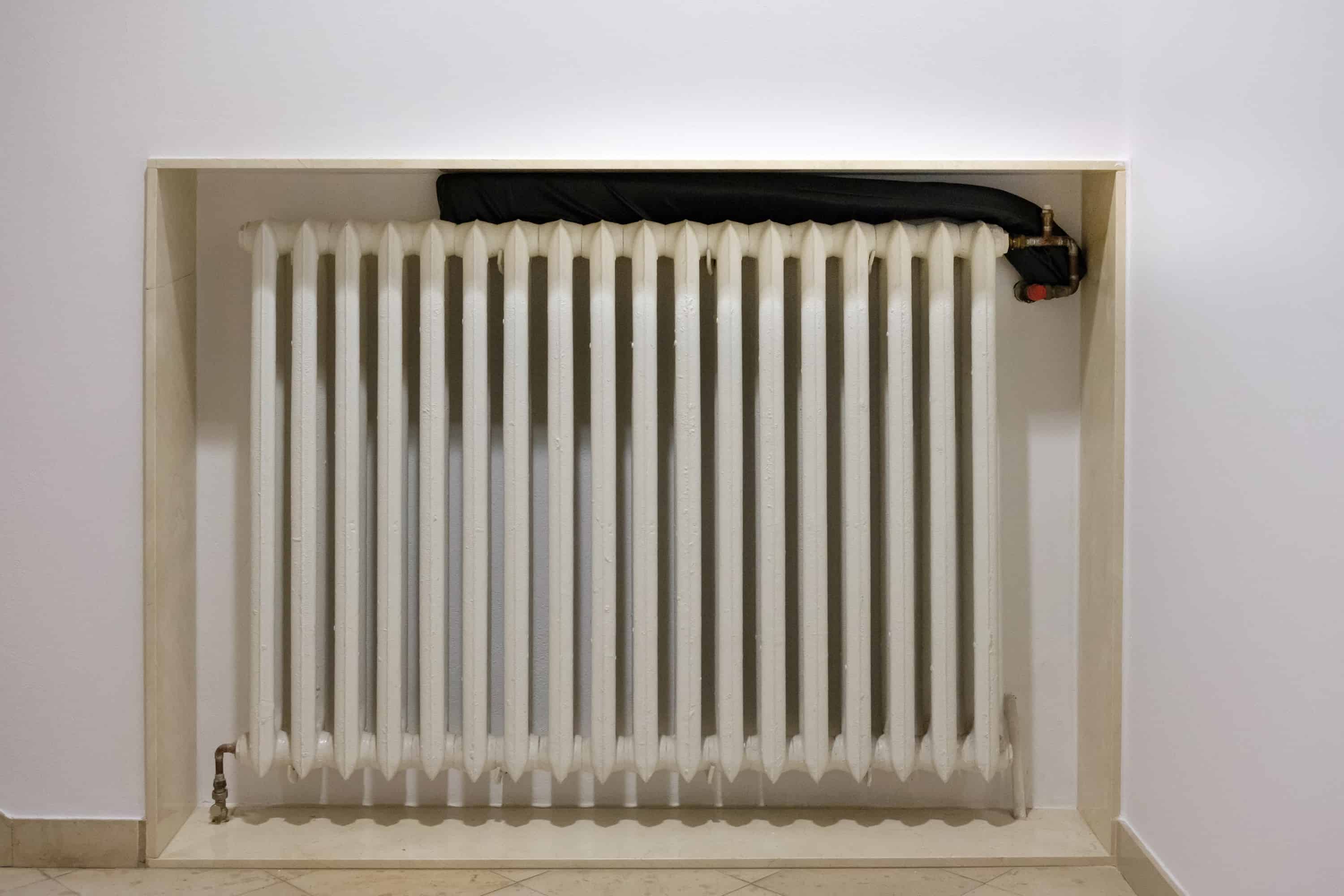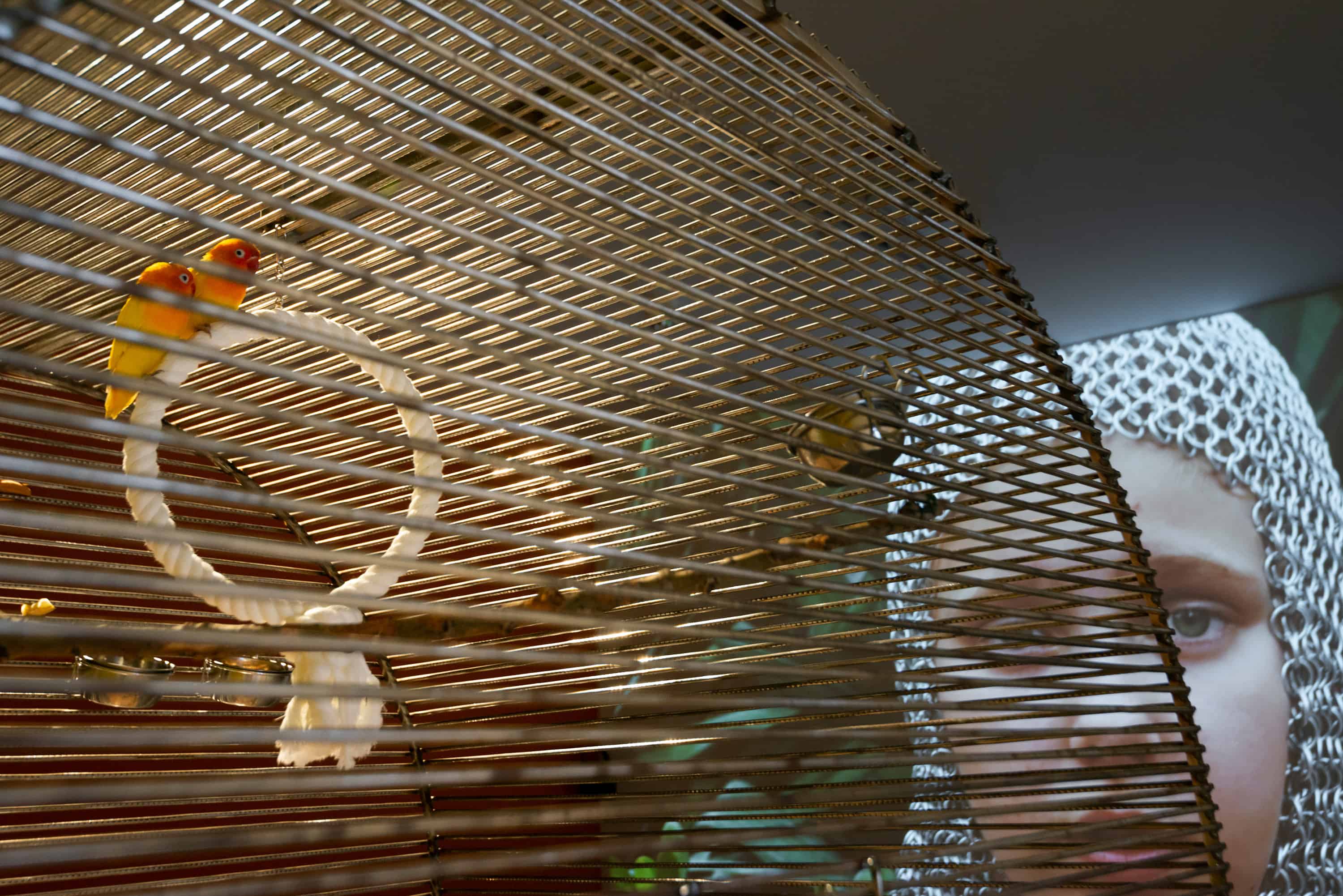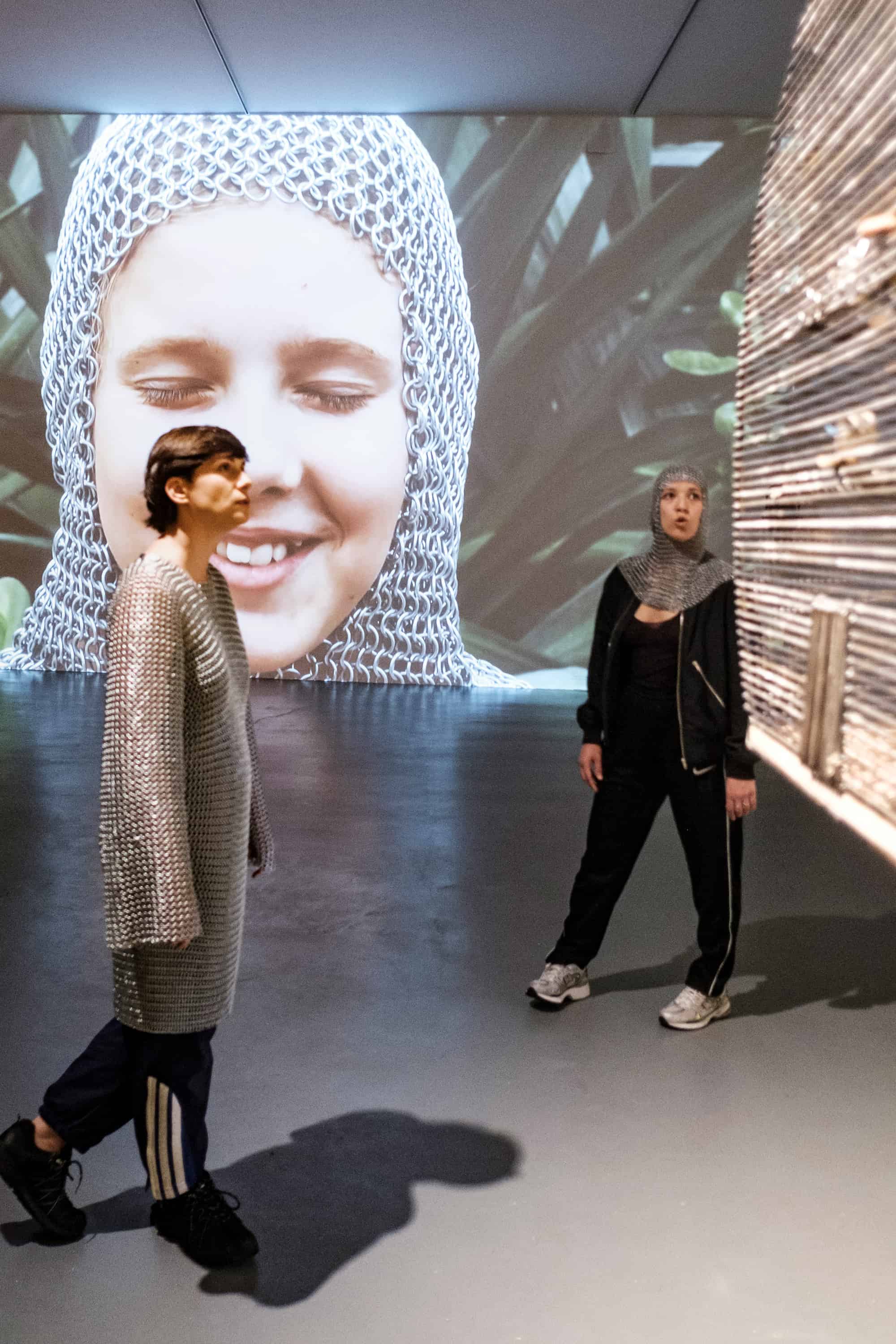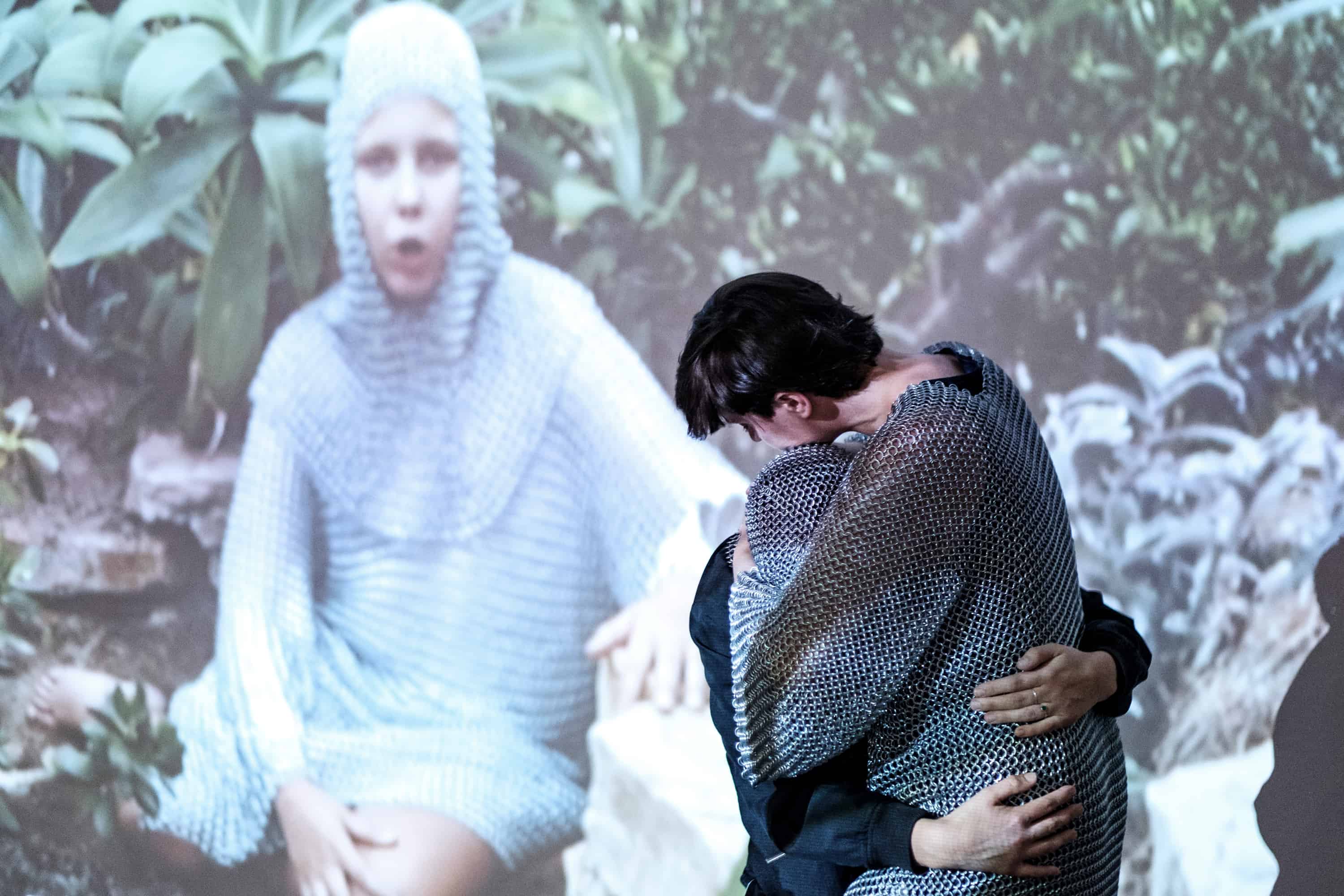We talked to two prize winners of this year’s edition of the Project Room Awards, a competition organised by the Ujazdowski Castle Centre for Contemporary Art. Every year the Centre invites several young artists to participate in the competition. Their task is to create an individual exhibition in cooperation with a curator, which is to be presented in a devoted room at the Ujazdowski Castle. This year the international jury awarded the first prize to Karolina Babińska – a young female artist who is just starting her adventure as a person cooperating with professional art institutions – for her acclaimed exhibition “Do It Yourself”. The second prize went to Ania Nowak – the artist working mostly within the field of theatre arts and performance and rarely engaging herself in visual arts – for her project with a somehow romantic title “Can You Die of a Broken Heart?”. We decided to ask both artists exactly the same questions and rightly so, because the answers we heard proved their diverse approach to exhibitions, art and art institutions.

Anna Nowak and Karolina Babińska, Project Room 2018, photo: Bartosz Górka
Karolina Babińska:
Michalina Sablik: Could you explain what the title of your exhibition means?
Karolina Babińska: When I worked on my Project Room exhibition “Do It Yourself” I wondered what the competition formula implies and what is required of our individual exhibitions. I strived to find out what “professionalism” and being “a professional artist” mean in this particular case. The most interesting phenomena in art nowadays from my point of view are outside art institutions. Despite this belief, with my “do it yourself” statement I did not want to deny the role of institutions expressly. I did not want these words to be interpreted as nit-picking and a manifestation of plain criticism. The “do it yourself” slogan is rather a stimulus for my audience to “think for themselves” and to challenge forms and relations proposed. I am deeply concerned about the communication crisis which can be seen not only in political life but unfortunately in regular families as well, dividing them into two halves. Currently, we are witnessing symbolic battles in which we utilise pictures and narrative forms, new ideologization and even phenomena from the distant past. I think that in this context the classics from the history of conceptual art (e.g. exhibitions by Robert Barry), especially those that relate to the nature of exhibitions (making them abstract, conceptualising them) are perfect vehicles to change viewers’ perception. Thanks to such efforts exhibitions can be seen from a completely different perspective. With my “Do It Yourself” exhibition presented as part of Project Room I wanted the audience to see the same they used to see literally, but slightly different.
M.S.: What questions or notions were crucial for you when you worked on your Project Room exhibition?
K.B.: During the year which preceded my exhibition, I took my first ever full-time job. I worked in the marketing department in one of the most prominent cultural institutions in Szczecin. Therefore, it was exciting for me to watch how the Ujazdowski Centre organised the promotional campaign presenting the Project Room and the individual exhibitions. In my opinion, it is tough to adequately prepare such a campaign so that it complies with contemporary marketing communication requirements and at the same time to find a space for authentic artistic creation somewhere in between. On the one hand, I was thinking about “secondary audience”, and what, e.g. Claire Bishop said about participating in artistic events and second-hand experiences, but also about marketing tools as a material for processing and subversive activities. I think that in all fields where precise persuasive language is used, the form and activities with and around it can serve as evidence of the political nature of this language. In other words, they let us see that this language is neither innocent nor transparent.

Karolina Babińska, Do It Yourself, 2018, Ujazdowski Castle Centre for Contemporary Art. Photo: Bartosz Górka
M.S.: What every participant of Project Room competition has at their disposal is uniform space – institutional white cube with the surface area of 120 m2. How did you approach this space?
K.B.: My “space” incorporated much more than the 120 m2 white cube. I also used notices on the walls regarding Project Room exhibitions. I considered places where posters and leaflets are usually placed, the role of a curator, director of the inviting institution, media announcements, the function of a vernissage, etc. as constituent elements of my space as well. I wanted the audience to see what was there already but slightly altered. When the visitors enter the Castle they see some things which were secretly changed or swapped – a doormat, pouffe made of eco leather with legs of unequal length. These artefacts seem to be trying to resemble materials used within the Castle halls. Visitors look at metal poster display units, notices on the walls written in the distorted font, a little shelf for leaflets with a text from the curator, a chair with a wedge pillow, that resembles Joseph Beuys’ “Fat Chair”, where the employee is opening the door to the Project Room rests. In the main room, there is a suspended ceiling, which was the most costly and demanding element of my exhibition. There are other objects as well, entirely abstract, with ambiguous function and origin.
M.S.: How vital was the venue itself? Did you attempt to create a site-specific exhibition?
K.S.: The venue itself was a central part of the project. If I presented my exhibition in any other space or in different circumstances, it would not be successful at all. All constituent elements of this exhibition were designed in relation to objects which already existed at the Centre and materials that these objects are made of. What is more, I focused on functionality. Therefore I chose objects which application is unambiguous and tried to distort their usual functions. During the vernissage, the curator of my exhibition, Aurelia Nowak, welcomed the guests while impersonating the Centre director. I delivered a speech pretending I was the curator, whereas the director, Jarosław Lubiak, played the role of the “invited female artist”. His part was a tricky one but he did exceptionally well using feminine grammatical gender during his speech.
M.S.: What tools and means of expression did you use in your project? What was the intended effect your exhibition was supposed to create for the audience?
K.S.: All the switching, changing and interventions were supposed to make an impression of a peculiar lack of skill and taste. All was supposed to look like “tacky, fake Chinese goods”. I was determined to somehow show the tension between the requirement of professional-like precision and resistance of a physical or materialised effect. I tried to make such alterations which would somehow result from the physical properties of the objects I used and from their functions. I have the feeling that what we call “perversity of inanimate objects” and “material logic” can be a key to understanding my approach. The resistance of matter in opposition to the pressure for efficiency in everyday life and, in general, in the financial context is, in fact, desirable in certain situations.

Karolina Babińska, Do It Yourself, 2018, Ujazdowski Castle Centre for Contemporary Art. Photo: Bartosz Górka
M.S.: How did your cooperation with the institution and the curator come about? Was this a new experience for you?
K.S.: It was all totally new! I enjoyed working with the exhibition producer, Ania Kobierska, who successfully negotiated the price of the suspended ceiling, so that we managed not to exceed the budget. It was interesting to hear what she said about her conversations with representatives of various companies. She asked them to lower the price because, as she claimed, we did not need the “real” suspended ceiling, we would be fine with a dummy. The professionals were outraged and answered that they did not offer dummies, so we needed to either take the regular suspended ceiling or manage without it. This seemed very symptomatic. In the end, the ceiling was made by a team of highlanders from the Sudetes and we are grateful they managed to do it within the 72 hours, i.e. the total time we were allowed for assembling everything we needed.
M.S.: What does the Project Room Prize mean to you? Is it a way to sum up a certain stage in your artistic career or do you consider it the beginning of something new?
K.S.: First of all, the prize was a big surprise for me. Because I spent so much time carefully analysing space as the starting point, I would like to now focus on narration and various forms of storytelling. I am thinking about movies and various ways of reporting and creating stories with the use of this medium.

Karolina Babińska, Do It Yourself, 2018, Ujazdowski Castle Centre for Contemporary Art. Photo: Bartosz Górka
M.S.: What are your plans for 2019 when it comes to your artistic activity?
K.S.: I am looking for opportunities to continue my studies abroad. I also hope that I will finally manage to go to Ethiopia because I have been thinking about it for some time. The history of this country and its general situation is extremely complex, full of paradox and peculiarities. I am now drafting the project about this place.
Ania Nowak:
Michalina Sablik: Could you explain what the title of your exhibition means?
Ania Nowak: The title “Can You Die of a Broken Heart?” concisely describes the issue which is a central topic of my exhibition, i.e. the impact of emotions and feelings on our bodies, physical health and vice versa. In other words, I talk about private and political borders between health and illness. The title was inspired by broken heart syndrome, which is the common name of stress cardiomyopathy, which in turn causes acute heart failure. The syndrome may be triggered by powerful emotions, such as the loss – death or departure – of a loved one.

Ania Nowak Can You Die of a Broken Heart? Performance at the exhibition in Project Room at the Ujazdowski Castle Centre for Contemporary Art. Photo by Bartosz Górka
M.S.: What questions or notions were crucial for you when you worked on your Project Room exhibition?
A.N.: The relationship between suffering and pleasure, both physical and emotional; what is pathological and what is normal in the context of health and diseases; mechanisms of human autoimmunity; strange and unexplained conditions and diseases; shame; late capitalism and female bodies; chronic conditions; learning our bodies/ourselves; body language and language as authority expressing knowledge and power.

Ania Nowak Can You Die of a Broken Heart? Performance at the exhibition in Project Room at the Ujazdowski Castle Centre for Contemporary Art. Photo by Bartosz Górka
M.S.: What every participant of Project Room competition has at their disposal is uniform space – institutional white cube with the surface area of 120 m2. How did you approach this space?
A.N.: When I was done selecting the topics and affects I wanted to work with for my exhibition I felt the need to somehow go against the obvious nature of a white cube and its clinic-like feeling. My topics are so complex and challenging that I wanted to make space a bit warmer and add some tropical ambience. I achieved this effect by using bright, yellow and orange colours on the walls. These are the colours of feathers on the lovebirds, which are present at the exhibition. At the same time, an interesting challenge for me was a one-time live performance within this space, which was supposed to resonate and engage in a unique dialogue with the remaining elements of the exhibition – the video and lovebirds. I definitely did not want it to simply be a theatre performance within the gallery space.
M.S.: How vital was the venue itself? Did you attempt to create a site-specific exhibition?
A.N.: I did not. I wanted to create elements which could exist on their own but at the same time communicate and merge in an unconventional way. Mostly I was interested in the interplay between materials, content and affect.

Ania Nowak Can You Die of a Broken Heart? Performance at the exhibition in Project Room at the Ujazdowski Castle Centre for Contemporary Art. Photo by Bartosz Górka
M.S.: What tools and means of expression did you use in your project? What was the intended effect your exhibition was supposed to create for the audience?
A.N.: I wanted my exhibition subtly touch upon things connected with intimacy and alienation. What does it mean to feel empathy or feel that an issue or a problem we are afraid of is looming over us? How is it to encounter a problem or feeling we do not understand fully? The reason I used tropical birds, plants and colours on the one hand, and images referring to armed conflicts in the Middle Ages (an armour, a cage, fight) on the other was to show ambiguity, non-evident or queer nature of these topics.
M.S.: How did your cooperation with the institution and the curator come about? Was this a new experience for you?
A.N.: The Project Room exhibition was not my first work made at Ujazdowski Castle Centre for Contemporary Art. Last year I did another project at the Centre, which was a part of a performance residency programme. I appreciated working with U-jazdowski and cooperating with Mateusz Szymanówka, with whom I also worked before. What I also enjoyed while preparing the exhibition was the meeting with Agnieszka Kłos, who works at the Ujazdowski Castle as an exhibition manager. She loves parrots and knows a lot about them. During five weeks of my exhibition she cared about the lovebirds kept there and I have to admit this was very practical. Her activities around the birds added another element of performance to my exhibition, so this was the real added value.

Ania Nowak Can You Die of a Broken Heart? Performance at the exhibition in Project Room at the Ujazdowski Castle Centre for Contemporary Art. Photo by Bartosz Górka
M.S.: What does the Project Room Prize mean to you? Is it a way to sum up a certain stage in your artistic career or do you consider it the beginning of something new?
A.N.: I think that for me it was the perfect beginning of my career as a visual artist. I usually work with theatre performances and present my work in performance spaces. I am eager to face the challenges of working in visual art institutions. I also want to somehow question the tools I used in my work before and the way I worked in general. I also want to work with other means of expression than choreography and performance.
M.S.: What are your plans for 2019 when it comes to your artistic activity?
A.N.: My biggest project this year will be a new performance which will premiere this autumn at Sophiensaele theatre in Berlin. This performance will follow up on the issues I present at my Project Room exhibition. Apart from that I currently feel an urgent need to think over the choice of topics and the way I have been working so far. I want to change my routine and go into the realms I have not yet discovered.

Ania Nowak Can You Die of a Broken Heart? Performance at the exhibition in Project Room at the Ujazdowski Castle Centre for Contemporary Art. Photo by Bartosz Górka







